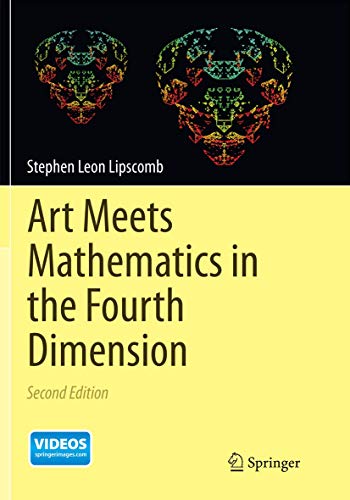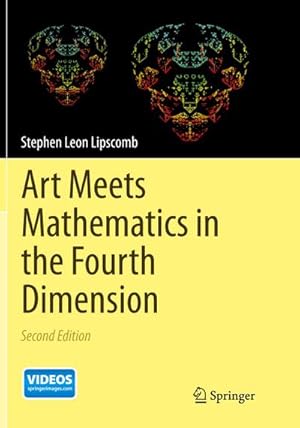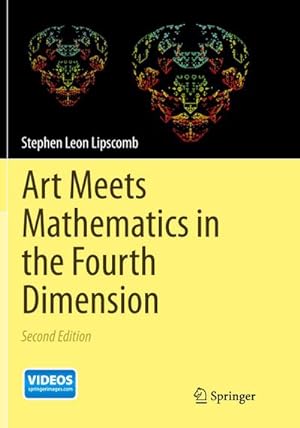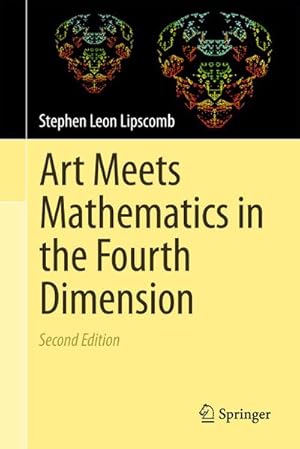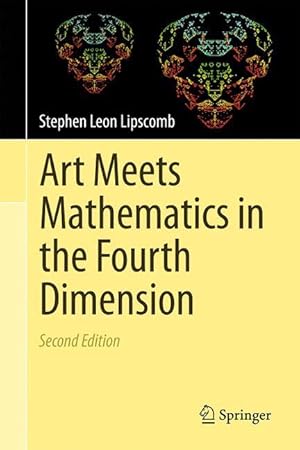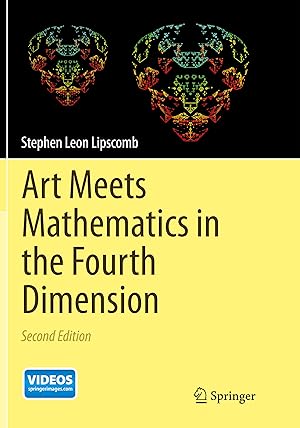LIPSCOMB, STEPHEN LEON (17 risultati)
Filtri di ricerca
Tipo di articolo
- Tutti i tipi di prodotto
- Libri (17)
- Riviste e Giornali (Nessun altro risultato corrispondente a questo perfezionamento)
- Fumetti (Nessun altro risultato corrispondente a questo perfezionamento)
- Spartiti (Nessun altro risultato corrispondente a questo perfezionamento)
- Arte, Stampe e Poster (Nessun altro risultato corrispondente a questo perfezionamento)
- Fotografie (Nessun altro risultato corrispondente a questo perfezionamento)
- Mappe (Nessun altro risultato corrispondente a questo perfezionamento)
- Manoscritti e Collezionismo cartaceo (Nessun altro risultato corrispondente a questo perfezionamento)
Condizioni Maggiori informazioni
- Nuovo (14)
- Come nuovo, Ottimo o Quasi ottimo (2)
- Molto buono o Buono (1)
- Discreto o Mediocre (Nessun altro risultato corrispondente a questo perfezionamento)
- Come descritto (Nessun altro risultato corrispondente a questo perfezionamento)
Legatura
Ulteriori caratteristiche
- Prima ed. (1)
- Copia autograf. (1)
- Sovracoperta (Nessun altro risultato corrispondente a questo perfezionamento)
- Con foto (10)
- Non Print on Demand (9)
Lingua (1)
Spedizione gratuita
- Spedizione gratuita in U.S.A. (Nessun altro risultato corrispondente a questo perfezionamento)
Paese del venditore
Valutazione venditore
-
Art Meets Mathematics in the Fourth Dimension
Da: Riverby Books (DC Inventory), Fredericksburg, VA, U.S.A.
Copia autografata
EUR 70,72
Convertire valutaEUR 5,14 per la spedizione in U.S.A.Quantità: 1 disponibili
Aggiungi al carrelloHardcover. Condizione: Very Good. Hardcover with dust jacket. Very good condition; includes CD. Signed copy; author signed and inscribed on the front free endpaper. "April 15, 2013 To John Gray, With warm regards, Stephen Lipscomb. 6/75." No date on the title page. Copyright page dated 2011. 147 pages. Pages are crisp and clean. We are a real brick and mortar bookstore and ship books everyday. This listing was written by an actual person with the book in front of them for inspection. Please email with questions or to request photographs. Signed.
-
Fractals and Universal Spaces in Dimension Theory. (=Springer Monographs in Mathematics).
Editore: Berlin, Berlin, 2009
Lingua: Inglese
Da: Antiquariat Thomas Haker GmbH & Co. KG, Berlin, Germania
Membro dell'associazione: GIAQ
Prima edizione
EUR 13,20
Convertire valutaEUR 75,00 per la spedizione da Germania a U.S.A.Quantità: 1 disponibili
Aggiungi al carrelloHardcover. Condizione: Wie neu. 1st ed. XVIII, 242 S.; Ill. Like new. Shrink wrapped. Sprache: Englisch Gewicht in Gramm: 750.
-
EUR 84,44
Convertire valutaEUR 28,63 per la spedizione da Regno Unito a U.S.A.Quantità: 1 disponibili
Aggiungi al carrelloPaperback. Condizione: Brand New. 2nd reprint edition. 204 pages. 9.25x6.10x0.48 inches. In Stock.
-
Art Meets Mathematics in the Fourth Dimension
Editore: Springer International Publishing, Springer International Publishing Apr 2017, 2017
ISBN 10: 3319381040 ISBN 13: 9783319381046
Lingua: Inglese
Da: buchversandmimpf2000, Emtmannsberg, BAYE, Germania
EUR 53,49
Convertire valutaEUR 60,00 per la spedizione da Germania a U.S.A.Quantità: 2 disponibili
Aggiungi al carrelloTaschenbuch. Condizione: Neu. Neuware -To see objects that live in the fourth dimension we humans would need to add a fourth dimension to our three-dimensional vision. An example of such an object that lives in the fourth dimension is a hyper-sphere or ¿3-sphere.¿ The quest to imagine the elusive 3-sphere has deep historical roots: medieval poet Dante Alighieri used a 3-sphere to convey his allegorical vision of the Christian afterlife in his Divine Comedy. In 1917, Albert Einstein visualized the universe as a 3-sphere, describing this imagery as ¿the place where the reader¿s imagination boggles. Nobody can imagine this thing.¿ Over time, however, understanding of the concept of a dimension evolved. By 2003, a researcher had successfully rendered into human vision the structure of a 4-web (think of an ever increasingly-dense spider¿s web). In this text, Stephen Lipscomb takes his innovative dimension theory research a step further, using the 4-web to reveal a new partial image of a 3-sphere. Illustrations support the reader¿s understanding of the mathematics behind this process. Lipscomb describes a computer program that can produce partial images of a 3-sphere and suggests methods of discerning other fourth-dimensional objects that may serve as the basis for future artwork.Springer Verlag GmbH, Tiergartenstr. 17, 69121 Heidelberg 204 pp. Englisch.
-
Art Meets Mathematics in the Fourth Dimension
Editore: Springer International Publishing, 2017
ISBN 10: 3319381040 ISBN 13: 9783319381046
Lingua: Inglese
Da: AHA-BUCH GmbH, Einbeck, Germania
EUR 53,49
Convertire valutaEUR 62,21 per la spedizione da Germania a U.S.A.Quantità: 1 disponibili
Aggiungi al carrelloTaschenbuch. Condizione: Neu. Druck auf Anfrage Neuware - Printed after ordering - To see objects that live in the fourth dimension we humans would need to add a fourth dimension to our three-dimensional vision. An example of such an object that lives in the fourth dimension is a hyper-sphere or '3-sphere.' The quest to imagine the elusive 3-sphere has deep historical roots: medieval poet Dante Alighieri used a 3-sphere to convey his allegorical vision of the Christian afterlife in his Divine Comedy. In 1917, Albert Einstein visualized the universe as a 3-sphere, describing this imagery as 'the place where the reader's imagination boggles. Nobody can imagine this thing.' Over time, however, understanding of the concept of a dimension evolved. By 2003, a researcher had successfully rendered into human vision the structure of a 4-web (think of an ever increasingly-dense spider's web). In this text, Stephen Lipscomb takes his innovative dimension theory research a step further, using the 4-web to reveal a new partial image of a 3-sphere. Illustrations support the reader's understanding of the mathematics behind this process. Lipscomb describes a computer program that can produce partial images of a 3-sphere and suggests methods of discerning other fourth-dimensional objects that may serve as the basis for future artwork.
-
Art Meets Mathematics in the Fourth Dimension
Editore: Springer International Publishing, 2014
ISBN 10: 3319062530 ISBN 13: 9783319062532
Lingua: Inglese
Da: AHA-BUCH GmbH, Einbeck, Germania
EUR 53,49
Convertire valutaEUR 62,96 per la spedizione da Germania a U.S.A.Quantità: 1 disponibili
Aggiungi al carrelloBuch. Condizione: Neu. Druck auf Anfrage Neuware - Printed after ordering - To see objects that live in the fourth dimension we humans would need to add a fourth dimension to our three-dimensional vision. An example of such an object that lives in the fourth dimension is a hyper-sphere or '3-sphere.' The quest to imagine the elusive 3-sphere has deep historical roots: medieval poet Dante Alighieri used a 3-sphere to convey his allegorical vision of the Christian afterlife in his Divine Comedy. In 1917, Albert Einstein visualized the universe as a 3-sphere, describing this imagery as 'the place where the reader's imagination boggles. Nobody can imagine this thing.' Over time, however, understanding of the concept of a dimension evolved. By 2003, a researcher had successfully rendered into human vision the structure of a 4-web (think of an ever increasingly-dense spider's web). In this text, Stephen Lipscomb takes his innovative dimension theory research a step further, using the 4-web to reveal a new partial image of a 3-sphere. Illustrations support the reader's understanding of the mathematics behind this process. Lipscomb describes a computer program that can produce partial images of a 3-sphere and suggests methods of discerning other fourth-dimensional objects that may serve as the basis for future artwork.
-
EUR 49,55
Convertire valutaEUR 70,00 per la spedizione da Germania a U.S.A.Quantità: 5 disponibili
Aggiungi al carrelloTaschenbuch. Condizione: Neu. Art Meets Mathematics in the Fourth Dimension | Stephen Leon Lipscomb | Taschenbuch | xvii | Englisch | 2017 | Springer | EAN 9783319381046 | Verantwortliche Person für die EU: Springer Verlag GmbH, Tiergartenstr. 17, 69121 Heidelberg, juergen[dot]hartmann[at]springer[dot]com | Anbieter: preigu.
-
EUR 130,64
Convertire valutaEUR 3,42 per la spedizione in U.S.A.Quantità: 4 disponibili
Aggiungi al carrelloCondizione: New. pp. 184.
-
EUR 121,47
Convertire valutaEUR 28,63 per la spedizione da Regno Unito a U.S.A.Quantità: 1 disponibili
Aggiungi al carrelloPaperback. Condizione: Like New. Like New. book.
-
Art Meets Mathematics in the Fourth Dimension
Editore: Springer International Publishing Apr 2017, 2017
ISBN 10: 3319381040 ISBN 13: 9783319381046
Lingua: Inglese
Da: BuchWeltWeit Ludwig Meier e.K., Bergisch Gladbach, Germania
EUR 53,49
Convertire valutaEUR 23,00 per la spedizione da Germania a U.S.A.Quantità: 2 disponibili
Aggiungi al carrelloTaschenbuch. Condizione: Neu. This item is printed on demand - it takes 3-4 days longer - Neuware -To see objects that live in the fourth dimension we humans would need to add a fourth dimension to our three-dimensional vision. An example of such an object that lives in the fourth dimension is a hyper-sphere or '3-sphere.' The quest to imagine the elusive 3-sphere has deep historical roots: medieval poet Dante Alighieri used a 3-sphere to convey his allegorical vision of the Christian afterlife in his Divine Comedy. In 1917, Albert Einstein visualized the universe as a 3-sphere, describing this imagery as 'the place where the reader's imagination boggles. Nobody can imagine this thing.' Over time, however, understanding of the concept of a dimension evolved. By 2003, a researcher had successfully rendered into human vision the structure of a 4-web (think of an ever increasingly-dense spider's web). In this text, Stephen Lipscomb takes his innovative dimension theory research a step further, using the 4-web to reveal a new partial image of a 3-sphere. Illustrations support the reader's understanding of the mathematics behind this process. Lipscomb describes a computer program that can produce partial images of a 3-sphere and suggests methods of discerning other fourth-dimensional objects that may serve as the basis for future artwork. 204 pp. Englisch.
-
Art Meets Mathematics in the Fourth Dimension
Editore: Springer International Publishing Nov 2014, 2014
ISBN 10: 3319062530 ISBN 13: 9783319062532
Lingua: Inglese
Da: BuchWeltWeit Ludwig Meier e.K., Bergisch Gladbach, Germania
EUR 53,49
Convertire valutaEUR 23,00 per la spedizione da Germania a U.S.A.Quantità: 2 disponibili
Aggiungi al carrelloBuch. Condizione: Neu. This item is printed on demand - it takes 3-4 days longer - Neuware -To see objects that live in the fourth dimension we humans would need to add a fourth dimension to our three-dimensional vision. An example of such an object that lives in the fourth dimension is a hyper-sphere or '3-sphere.' The quest to imagine the elusive 3-sphere has deep historical roots: medieval poet Dante Alighieri used a 3-sphere to convey his allegorical vision of the Christian afterlife in his Divine Comedy. In 1917, Albert Einstein visualized the universe as a 3-sphere, describing this imagery as 'the place where the reader's imagination boggles. Nobody can imagine this thing.' Over time, however, understanding of the concept of a dimension evolved. By 2003, a researcher had successfully rendered into human vision the structure of a 4-web (think of an ever increasingly-dense spider's web). In this text, Stephen Lipscomb takes his innovative dimension theory research a step further, using the 4-web to reveal a new partial image of a 3-sphere. Illustrations support the reader's understanding of the mathematics behind this process. Lipscomb describes a computer program that can produce partial images of a 3-sphere and suggests methods of discerning other fourth-dimensional objects that may serve as the basis for future artwork. 204 pp. Englisch.
-
Art Meets Mathematics in the Fourth Dimension
Editore: Springer International Publishing, 2014
ISBN 10: 3319062530 ISBN 13: 9783319062532
Lingua: Inglese
Da: moluna, Greven, Germania
EUR 48,37
Convertire valutaEUR 48,99 per la spedizione da Germania a U.S.A.Quantità: Più di 20 disponibili
Aggiungi al carrelloCondizione: New. Dieser Artikel ist ein Print on Demand Artikel und wird nach Ihrer Bestellung fuer Sie gedruckt. Develops the concept of the hypersphere dimensions as it relates to art, architecture, and mathematicsIncludes illustrations to support mathematical analysesDiscusses computer software that enables new hypersphere research and visualization.
-
Art Meets Mathematics in the Fourth Dimension
Editore: Springer International Publishing, 2017
ISBN 10: 3319381040 ISBN 13: 9783319381046
Lingua: Inglese
Da: moluna, Greven, Germania
EUR 48,37
Convertire valutaEUR 48,99 per la spedizione da Germania a U.S.A.Quantità: Più di 20 disponibili
Aggiungi al carrelloCondizione: New. Dieser Artikel ist ein Print on Demand Artikel und wird nach Ihrer Bestellung fuer Sie gedruckt. Develops the concept of the hypersphere dimensions as it relates to art, architecture, and mathematicsIncludes illustrations to support mathematical analysesDiscusses computer software that enables new hypersphere research and visualization.
-
Art Meets Mathematics in the Fourth Dimension
Editore: Springer International Publishing, Springer International Publishing Nov 2014, 2014
ISBN 10: 3319062530 ISBN 13: 9783319062532
Lingua: Inglese
Da: buchversandmimpf2000, Emtmannsberg, BAYE, Germania
EUR 53,49
Convertire valutaEUR 60,00 per la spedizione da Germania a U.S.A.Quantità: 1 disponibili
Aggiungi al carrelloBuch. Condizione: Neu. This item is printed on demand - Print on Demand Titel. Neuware -To see objects that live in the fourth dimension we humans would need to add a fourth dimension to our three-dimensional vision. An example of such an object that lives in the fourth dimension is a hyper-sphere or ¿3-sphere.¿ The quest to imagine the elusive 3-sphere has deep historical roots: medieval poet Dante Alighieri used a 3-sphere to convey his allegorical vision of the Christian afterlife in his Divine Comedy. In 1917, Albert Einstein visualized the universe as a 3-sphere, describing this imagery as ¿the place where the reader¿s imagination boggles. Nobody can imagine this thing.¿ Over time, however, understanding of the concept of a dimension evolved. By 2003, a researcher had successfully rendered into human vision the structure of a 4-web (think of an ever increasingly-dense spider¿s web). In this text, Stephen Lipscomb takes his innovative dimension theory research a step further, using the 4-web to reveal a new partial image of a 3-sphere. Illustrations support the reader¿s understanding of the mathematics behind this process. Lipscomb describes a computer program that can produce partial images of a 3-sphere and suggests methods of discerning other fourth-dimensional objects that may serve as the basis for future artwork.Springer Verlag GmbH, Tiergartenstr. 17, 69121 Heidelberg 204 pp. Englisch.
-
Art Meets Mathematics in the Fourth Dimension
Editore: Springer International Publishing, 2014
ISBN 10: 3319062530 ISBN 13: 9783319062532
Lingua: Inglese
Da: preigu, Osnabrück, Germania
EUR 50,10
Convertire valutaEUR 70,00 per la spedizione da Germania a U.S.A.Quantità: 5 disponibili
Aggiungi al carrelloBuch. Condizione: Neu. Art Meets Mathematics in the Fourth Dimension | Stephen Leon Lipscomb | Buch | xvii | Englisch | 2014 | Springer International Publishing | EAN 9783319062532 | Verantwortliche Person für die EU: Springer Verlag GmbH, Tiergartenstr. 17, 69121 Heidelberg, juergen[dot]hartmann[at]springer[dot]com | Anbieter: preigu Print on Demand.
-
Art Meets Mathematics in the Fourth Dimension
Da: Majestic Books, Hounslow, Regno Unito
EUR 127,75
Convertire valutaEUR 7,44 per la spedizione da Regno Unito a U.S.A.Quantità: 4 disponibili
Aggiungi al carrelloCondizione: New. Print on Demand pp. 184.
-
Art Meets Mathematics in the Fourth Dimension
Da: Biblios, Frankfurt am main, HESSE, Germania
EUR 136,98
Convertire valutaEUR 9,95 per la spedizione da Germania a U.S.A.Quantità: 4 disponibili
Aggiungi al carrelloCondizione: New. PRINT ON DEMAND pp. 184.


